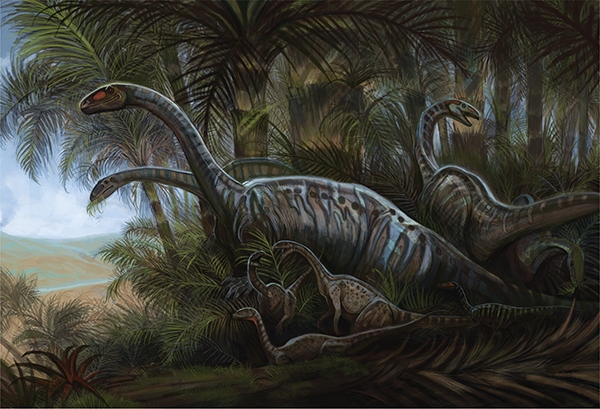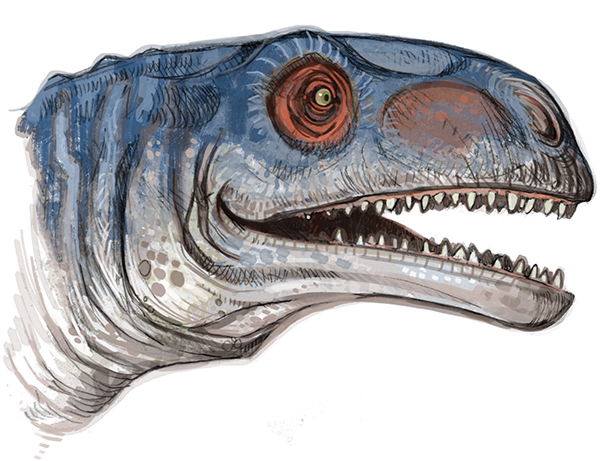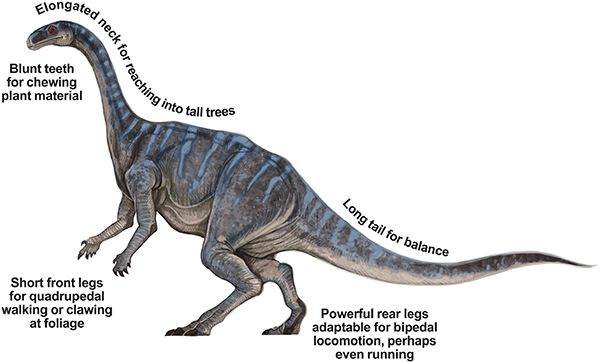

PRONUNCIATION | PLAY-tee-uh-SAWR-us
SPECIES | Plateosaurus engelhardti
NAME | Broad Lizard
FAMILY | Plateosauridae
PERIOD | Triassic
DIET | Herbivore
SIZE | 30 feet (9m)
YEAR DISCOVERED | 1837
Plateosaurus is one of the earliest dinosaurs both to evolve and to be discovered by paleontologists. Appearing during the Triassic period more than 200 million years ago, plateosaurus is an archetypal dinosaur that would later evolve into many of the more well-known species of sauropods and hadrosaurs, making it one of the grandfathers of all dinosaurs.

Plateosaurus’ short blunt head with peg teeth was adapted for grazing among the ferns and palms of the Triassic period. This design would later evolve into the many different species of sauropods.

Plateosaurus is one of the early examples of dinosaurs evolving in competition with plants. As herbivore dinosaurs ventured further and grew larger, the forests also became bigger. Ecosystems adapted and grew toward the once barren inland with dinosaurs close behind.


Although it had four limbs, the plateosaurus most likely spent time moving and standing on its hind legs to reach high into the fern trees and palms to feed. Paleontologists speculate on whether the plateosaurus preferred to walk on two or four legs.
Coelophysis, like plateosaurus, was one of the earliest dinosaur species. This bipedal carnivore was an archetype around which all theropod species would evolve including tyrannosaurus and velociraptor. This small, swift runner would make a fast feast of early insects, lizards and amphibians. It is unlikely that they would have been any threat to the gigantic plateosaurus.

Coelophysis bauri
Length 10 feet (3m)